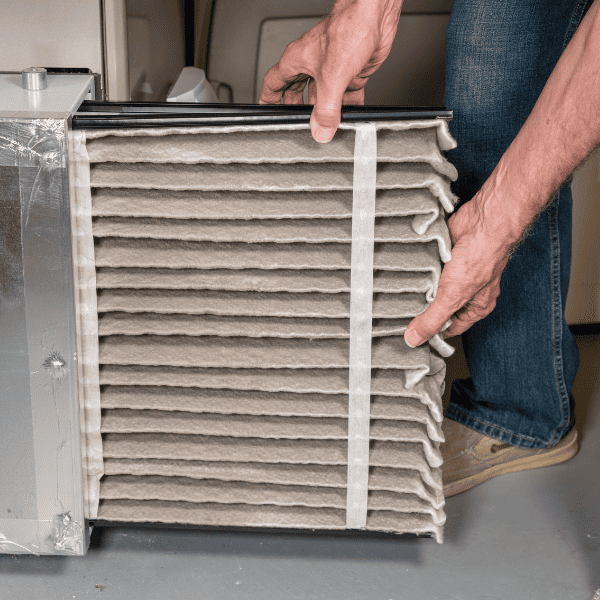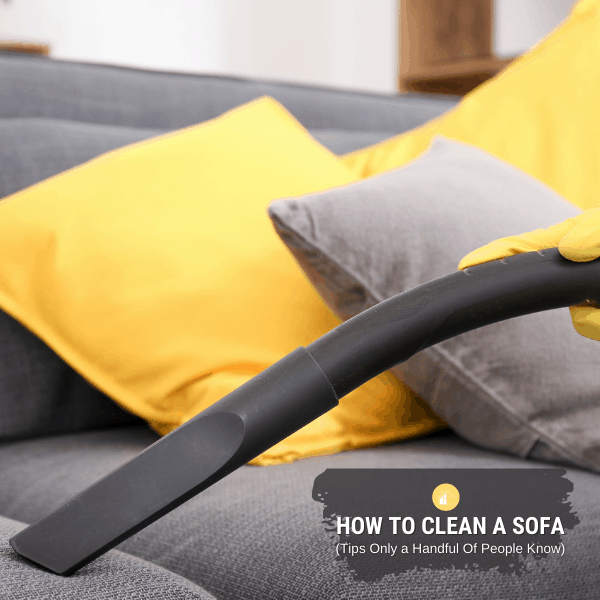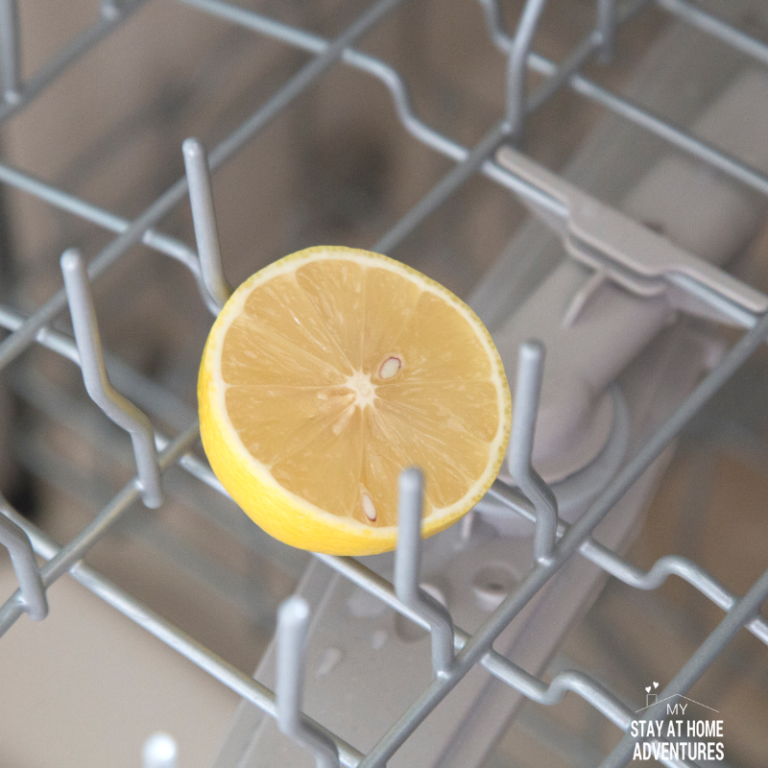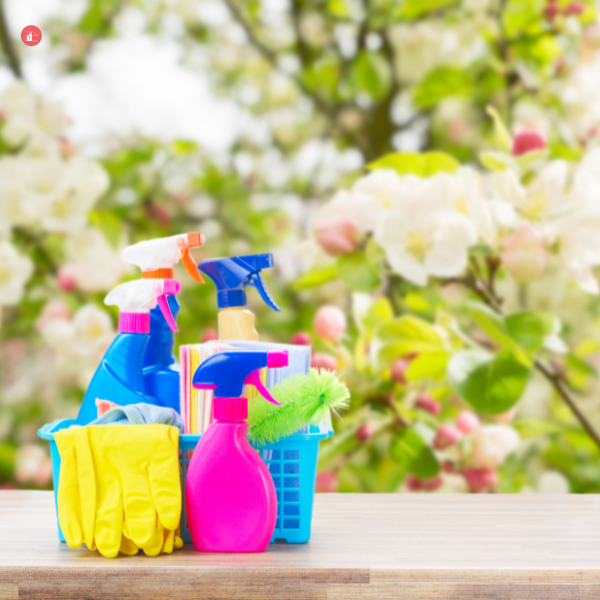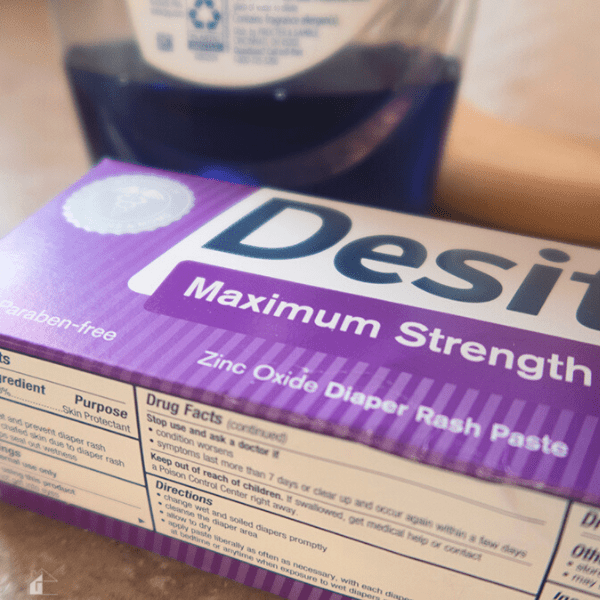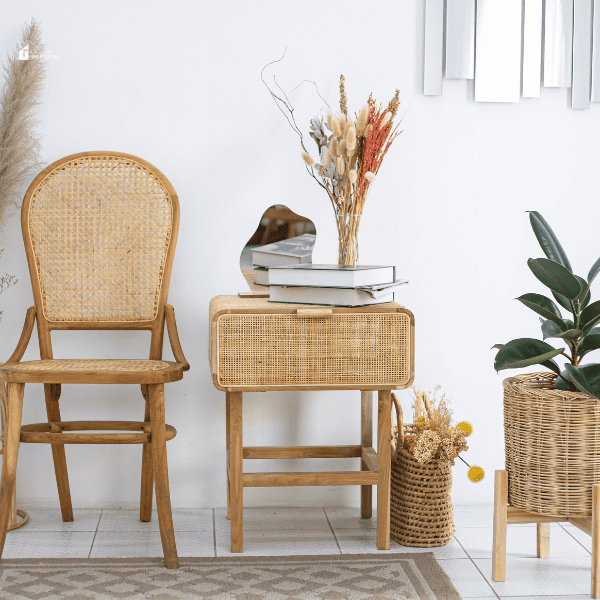How Often Should You Mop Your Floors?
This post may contain affiliate links which might earn us money. Please read my Disclosure and Privacy policies hereFloor mopping is a crucial part of maintaining the cleanliness of your home. However, the million-dollar question is, how often should you mop your floors? With so many opinions and expert advice on the subject, it can be challenging to figure out the best mopping schedule for your home.
But don't worry. We've got you covered.
Let's delve into the nitty-gritty of mopping frequency, so you can keep your home floors sparkling clean without going overboard or neglecting them.
So, let's get started!
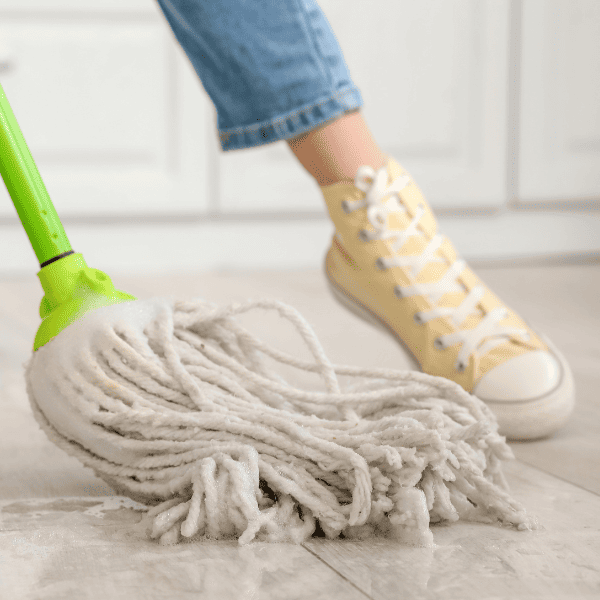
Is it OK to mop floors every day?
The mopping frequency depends on the area's foot traffic. High-traffic areas like kitchens, entrances, bathrooms, and hallways should be mopped once a week, while less frequently used areas like guest rooms can be mopped every other week or monthly.
Running a dry mop over trouble areas is recommended daily to extend the time between mopings. Overmopping can wear down floor seals, so using a lightly damp mop and avoiding excessive water exposure is important.
Can you mop too often?
Mopping is essential to keep floors clean and hygienic, but can you mop too often? Overmopping can actually cause damage to your floors, especially if you're using too much water. It's important to follow the recommended frequency for mopping, which is once a week for high-traffic areas like the entrance, kitchen, bathroom, and hallways.
However, you may need to mop more frequently if you have pets or a family. It's crucial to consider the type of flooring you have and use the appropriate cleaning method. Regular mopping is important for hygiene and the preservation of your flooring.
You might enjoy these posts:
What happens if you don't mop the floor?
Not mopping the floors regularly can lead to an accumulation of dirt, dust, and bacteria. The longer you go without mopping, the more difficult it becomes to remove stains and grime. In addition, high-traffic areas in your home can become breeding grounds for harmful microorganisms, posing a health risk to you and your family.
Failure to mop regularly can also result in unsightly scratches or discoloration on your flooring. Therefore, it's crucial to establish a cleaning routine and stick with it to maintain the cleanliness and longevity of your floors.
Importance of Mopping Floors Regularly
Regularly mopping floors is essential for maintaining the hygiene and cleanliness of a home. Dirt, dust, and other pollutants can accumulate on floors, jeopardizing the overall health and well-being of individuals living in the house.
Furthermore, failure to mop floors can also lead to permanent damage on flooring surfaces, particularly those with natural wood.
Experts agree that high-traffic areas like the entrance, kitchen, bathroom, and hallways should be mopped at least once a week, while less frequently used areas may need only bi-weekly or monthly mopping.
Sweeping or vacuuming floors before mopping can also help to prevent damage.
Now that we have answered your top questions let's go into more detail.
High-Traffic Areas that Need Frequent Mopping
High-traffic areas like the entrance, kitchen, bathrooms, and hallways need frequent mopping as they gather dirt and germs quickly. It's recommended to mop these areas at least once a week. However, if you have pets or children, you may need to mop more often as they tend to track in dirt and spills.
To extend the time between mopping, run a dry mop over the trouble areas daily, picking up grit, pet hair, pollen, and other small debris. Removing any wet areas on the floor before mopping is essential, as using a mild cleaner and avoiding an overly wet mop prevent leaving streaks and residue.
Rooms that Don't Require Weekly Mopping
Rooms don't require weekly mopping, including those that aren't frequently used, such as guest rooms or storage areas. They may only need to be mopped every other week or even monthly. However, it's important to note that special circumstances may require more frequent mopping, such as if there are pets with dirty paws or messy eaters in the room.
To extend the time between mopping sessions, it's recommended to use a dry mop daily to pick up grit and debris. It's also important to wipe up any wet areas on the floor before mopping, such as wet footprints or spills.
Exceptions to the Weekly Mopping Rule
Exceptions to the weekly mopping rule include high-traffic areas that need more frequent mopping, like the entrance, kitchen, bathrooms, and hallways. If you have pets or children, you may also need to mop more often to tackle muddy paw prints and food debris.
On the other hand, rooms that are not frequently used, such as guest rooms, can be mopped every other week or even monthly.
It's essential to adapt your frequency of mopping to your specific circumstances and needs to keep your floors clean and hygienic. Utilizing a dry mop daily can also extend the time between wet mopping sessions.
Table showing floor types, mopping schedules, and cleaning tips.
| Floor Type | Mopping Frequency | Tips for Effective Cleaning |
|---|---|---|
| Hardwood Floors | Once every 1-2 weeks | 1. Use a damp mop, not soaking wet. |
| 2. Clean spills immediately to avoid damage. | ||
| 3. Use a cleaner designed for hardwood floors. | ||
| Laminate Floors | Once every 1-2 weeks | 1. Use a microfiber mop with a gentle cleaner. |
| 2. Avoid using excessive water to prevent damage. | ||
| 3. Sweep or vacuum regularly to remove dirt and debris. | ||
| Tile Floors | Once a week | 1. Use a mild detergent mixed with warm water. |
| 2. Scrub grout lines with a brush periodically. | ||
| 3. Dry the floor after mopping to avoid streaks. | ||
| Vinyl Floors | Once a week | 1. Use a mild cleaner suitable for vinyl floors. |
| 2. Rinse the floor with clean water after mopping. | ||
| 3. Dry the floor with a clean cloth or towel. | ||
| Linoleum Floors | Once a week | 1. Use a gentle cleaner designed for linoleum floors. |
| 2. Rinse with cool water after mopping. | ||
| 3. Polish the floor periodically for added shine. | ||
| Stone Floors | Once every 1-2 weeks | 1. Use a cleaner specifically designed for stone floors. |
| 2. Avoid acidic cleaners that can damage stone surfaces. | ||
| 3. Seal the stone periodically to maintain its appearance. | ||
| Concrete Floors | Once every 2 weeks or as needed | 1. Use a pH-neutral cleaner for concrete floors. |
| 2. Remove stains with a stiff brush and mild detergent. | ||
| 3. Seal concrete floors periodically for added protection. | ||
| High-Traffic Areas | Twice a week or as needed | 1. Sweep or vacuum regularly to remove dirt and debris. |
| (hallways, entryways) | 2. Use a suitable cleaner for the specific floor type. | |
| 3. Spot clean spills and stains immediately. | ||
| Kitchen Floors | At least once a week or as needed | 1. Clean up spills and messes immediately. |
| 2. Use a suitable cleaner for the specific floor type. | ||
| 3. Sweep or vacuum daily to remove crumbs and dirt. | ||
| Bathroom Floors | Once a week | 1. Use a disinfectant cleaner to remove germs and bacteria. |
| 2. Dry the floor after mopping to prevent mold and mildew. | ||
| 3. Clean the grout lines periodically to keep them fresh. |
Tips for Extending Time Between Mopping
To extend the time between mopping, it's important to regularly sweep or vacuum the floors before mopping them. This way, any potential debris that could damage the flooring is removed. It's also helpful to pick up any crumbs or spills immediately to keep the floors looking clean and tidy.
To avoid water damage, any drips should be cleaned up quickly. Using doormats at entrances can also prevent dirt and dust from getting onto the floors. By implementing these tips regularly, the frequency of mopping can be reduced, saving time and effort.
Tools Required for Effective Mopping
To effectively mop your floors, you need to have the right tools. Traditional damp mopping is the best method to clean many types of floors, and a good thorough weekly damp mopping with a proper cleaning solution and mop can provide deep cleaning for your floors. You need to select the right mop based on your type of flooring.
String mops or strip mops are best for textured floors, while smooth floors require microfiber pads. Make sure to use a detergent designed for your flooring type and wash it in a bucket with clean rinse water. Sweep or vacuum the floor before mopping and use a doormat at entry doors to keep floors cleaner for longer.
Steps to Follow When Wet Mopping
To effectively wet mop your floors, it is important to follow these seven steps.
- First, sweep or vacuum the area to pick up large particles.
- Second, wipe up any wet areas on the floor before you mop.
- Third, fill a bucket with warm water and a small amount of cleanser. Fourth, start at the room's far corner and work backward toward the room exit.
- Fifth, immerse the mop in the bucket and wring it out. Sixth, use back-and-forth strokes beginning at the wall and moving toward the center of the room and the exit.
- Lastly, mop again with clear water and no detergent to remove any cleaning solutions that may linger on the floor.
Additional Cleaning Steps for Scuff Marks
To tackle scuff marks on your floors, there are additional cleaning steps you can take. First, use a rubber eraser to rub away the scuff mark gently.
If that doesn't work, mix baking soda and warm water to create a paste and apply it to the scuff mark with a soft cloth, rubbing gently until the mark disappears.
For stubborn scuffs, try using a non-abrasive cleanser and a soft-bristled brush to scrub the area gently.
Remember to always test any cleaning solution in a small, inconspicuous area before applying it to the entire floor. With these additional cleaning steps, your floors will look as good as new in no time.
Finalizing the Mopping Process
Finalizing the Mopping Process: Once the mopping is complete, it is important to finish it properly. Start by rinsing the mop in clean water and wringing it out thoroughly.
Wipe down any remaining water or cleaner on the floor with a dry cloth or towel. Opening the windows or turning on a fan is also recommended to help dry the floors faster.
Avoid walking on the freshly mopped area until it is completely dry to prevent slip and fall accidents.
Finally, store the mop and cleaning supplies in a designated area to keep them organized and easily accessible for future use. The mopping process can be completed thoroughly and efficiently by following these steps.
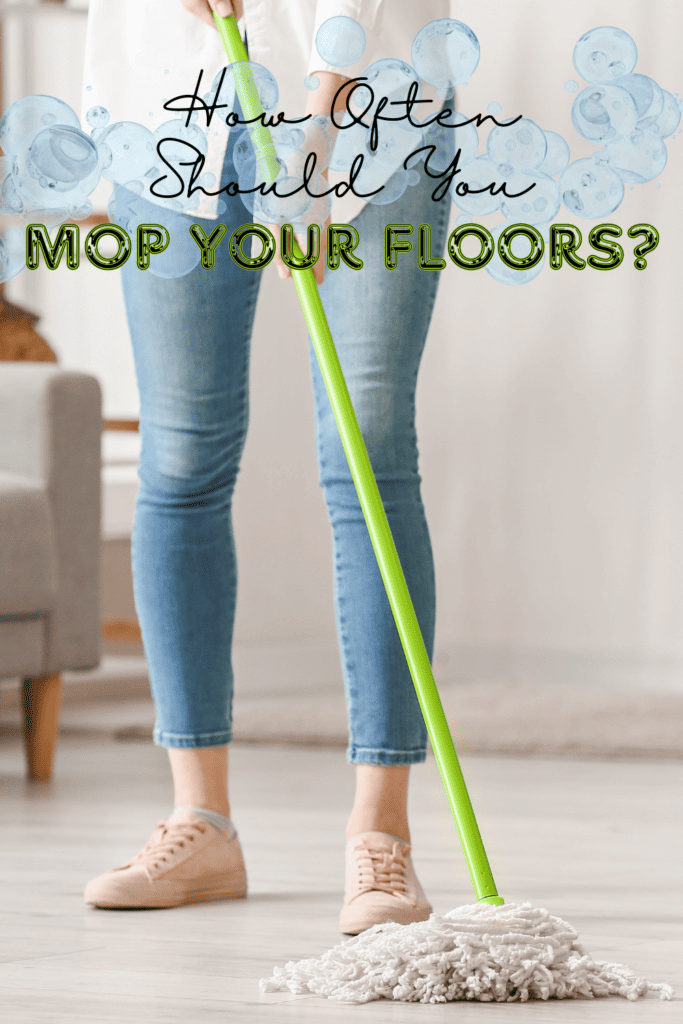
Flooring Maintenance According to Floor Type
Maintaining different types of flooring requires different cleaning methods. It's best to avoid mopping for solid wood flooring, as water can cause it to swell and warp. Instead, regular dusting with a dry microfiber cloth is preferable.
Laminate flooring is naturally water-resistant, but excessive moisture can still damage the boards, causing them to move or de-laminate.
Therefore, it's essential to dry the laminate quickly after mopping.
Tiles and stone floors can handle more water, but using too much water can ruin the grout. Whatever the flooring type, it's important to sweep or vacuum before mopping to prevent dirt and debris from scratching the surface.

